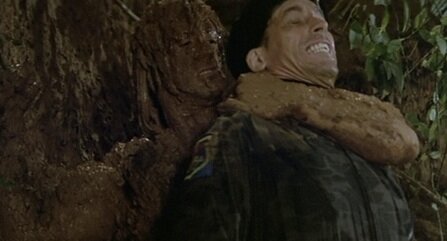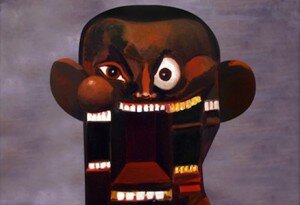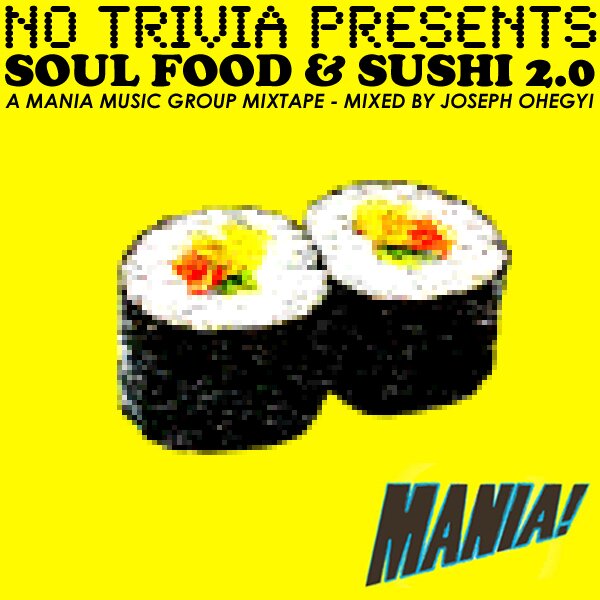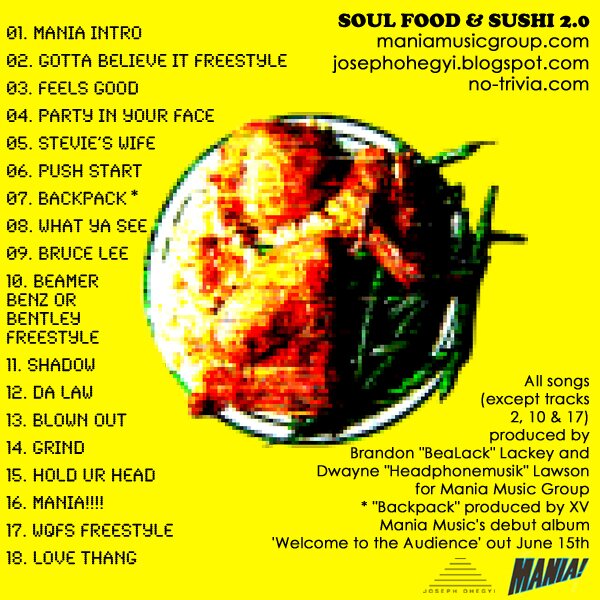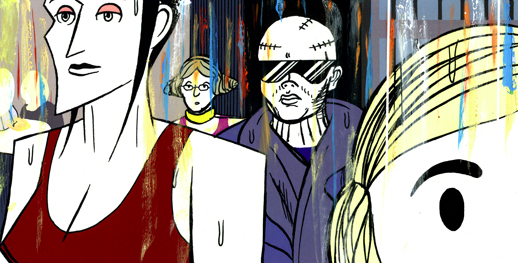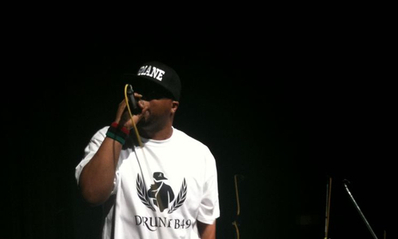
Despite the relatively minor events of the song—a woman gets revenge on some chumps that ripped her off—G-Mane makes “Maria” (produced by MIDIMarc) mythical. He’s the rapper bard poet, telling Maria’s story in detail-filled couplets that give us a sense of her but only a sense–she remains distant and unknowable. A local legend.
Like most rap songs about girls, it begins with physical description, but it’s not as simple as “She’s fine, she’s a bad bitch,” (though that’s part of it), but that her skin, her thighs–everything–illustrates how together she is in every aspect of her life: “She’s got a good head on her shoulders/Take no shit off top”.
G’s description of Maria is almost non-sexual because like, you’re just not going to get next to Maria like that: “Queen bee, she handle business since her nigga on lock/Other niggas wanna move in, thinkin’ they got clout/But she focused, do her thing, she got two sons to think about.” Notice how the verse shifts from physical details, to compliments about her person, to hard, cold, facts about Maria’s circumstance. Like any woman in power, she’s constantly threatened/courted by suitors who just can’t conceive of her doing it all on her own or think she’s easy to take advantage of and takeover. G-Mane’s wise to admire her from afar.
Particularly affecting is the aside about her sons, because it humanizes Maria and also, makes her even more impressive–she isn’t just after money, she has kids to support, a husband’s tiny empire to hold down. From there, the description moves back into the physical but now it’s all material objects, from the shit she wears (Prada, Gucci) to the gun she carries. The verse ends with G-Mane calling her “The Godmother”–the ultimate compliment.
There’s no hook on this song, what divides the verses is a quick interlude wherein G-Mane spots Maria and casually says, “What’s up?” We have to wait until the next verse to hear what Maria tells him–again, she’s too much of a myth for us to hear her voice–and it’s at this point that our storyteller, gets wrapped-up in the tale: “She said G, I need you to do a favor for me/I think these dudes in the bathroom, I want you to go and see.” Of course, the dudes are in there.
G-Mane’s not asked to pop these dudes. He’s not even asked to say anything to them. Just confirm that they’re in there. Maria’ll do the rest. This kind of minor-detail storytelling is something G-Mane does a lot. His songs are hardly ever street epics and gun-battles, it’s more often than not, little bullshit like this. And cleverly, G-Mane sprinkles this part of the song with similarly “unimpressive” details: his drink order (“a Budweiser with a coke, ice, and jack”), that he took a piss while in the bathroom.
When G returns from the bathroom, verifying the guys are in there, Maria hands him the drink he ordered, but the action’s described as “she passed a libation”. Once Maria touches something, it becomes something bigger and grander–the drink, a small sacrifice. It’s like that part in “Pop the Trunk” from another Alabama wordsmith, Yelawolf, when Yela’s friend hands him his watch before he “grabs his biscuit”. Like, something’s passed between them, and it’s far more nefarious than just a simple Cartier watch or Budweiser.
Reflecting the listener’s perverse curiosity, G-Mane says, “I knew I had to step out, to see these boys get crept-on”, and so, we have a first-hand description of how Maria takes these fuckers out. This is a real dedication to storytelling rap because like, G’s concerned with the logistics of his story and so, he has to justify how he witnessed the shooting: He went out of his way to see it.
And then there’s the violence itself–what the whole song has built up to—and it’s a blast of small details, it’s not exactly epic, it’s quickly done, curt, concise, and violent. The closest to this mix of dramatic tension and just like, casual, flash of violences I can think of would be the “action” scenes in Donald Goines’ novels. Like, it’s all over before it even started and it’s all the awkward, bitter, aftermath.
The song’s final lines describe the kill-shot, and once again, G-Mane goes to crime movies to compliment Maria’s heartless calm. But this time, it’s not the grand, Don-like qualities of The Godfather that make Maria something else, but her similarity to Ice Cube’s iconic Boyz n the Hood character. That kind of wild, heartless efficiency: “Like Doughboy, she told him turn your punk-ass over then/Smashed-out in a blacked-out Rover, The End.” One last, blunt flash of detail and then it’s over.
further reading/viewing:
-“Maria” on Dirty Glove Bastard
-How Big Is Your World? ft. “Listen” by G-Mane by ME
-Download Sunday on da Porch
-Southern Hospitality on Sunday on da Porch
-G-Mane on Twitter
-Midi Marc on Twitter
-The Women of Homer by Walter Copland Perry
-“Libation” on Wikipedia
-Photo by Monique R.
